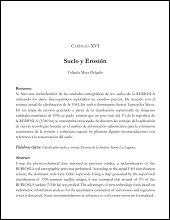Physiological, phenological and productive responses of tomato (Solanum licopersicum L.) plants treated with QuitoMax
Respuesta fisiológica, fenológica y productiva del tomate (Solanum licopersicum L.) tratado QuitoMax
Autor
JUAN JOSE REYES PEREZ
Bernardo Murillo Amador
Miguel Ángel Ramírez Arrebato
Luis Guillermo Hernández Montiel
Metadatos
Mostrar el registro completo del ítemResumen
"The objective of this study was to evaluate the foliar application of the biostimulant QuitoMax at concentrations 100, 200, 300 and 400 mg·ha-1 in comparison to a control without the application of QuitoMax on the height and stem thickness of tomato plants. The durations of the plant phenological phases, productive indicators (the number of fruit, bunches per plant, the number of fruits per bunches, the polar and equatorial diameters of the fruit, the mass of the fruit and crop yield), the quality of the fruit expressed as the total soluble solids and acidity, and the commercial quality of the harvested fruits were also evaluated. The highest concentrations of QuitoMax (300 and 400 mg·ha-1) were found to produce the most vigorous plants, lengthened the duration of the plant phenophases, and resulted in significantly higher values in the production indicators, including the fresh mass of the fruits and performance. Additionally, they produced fruits with a higher content of total soluble solids." "El objetivo de este estudio fue evaluar la aplicación foliar del bioestimulante QuitoMax a las concentraciones 100, 200, 300 y 400 mg·ha-1 en comparación a un testigo sin aplicación sobre la altura y el grosor del tallo de plantas de tomate, también se evaluó la duración de las fases fenológicas de las plantas, los indicadores productivos: número de racimos por plantas, frutos por racimos, diámetro polar y ecuatorial del fruto, la masa del fruto y el rendimiento agrícola, así como la calidad del fruto expresada en sólidos solubles totales y nivel de acidez, adicionalmente se evaluó la calidad comercial de los frutos cosechados. Se encontró que las mayores concentraciones de QuitoMax 300 y 400 (mg ha-1) produjeron las plantas más vigorosas, alargaron la duración en las fases fenológicas, pero produjeron significativamente los mayores valores en los indicadores de producción incluidos la masa fresca de los frutos y el rendimiento. Adicionalmente propiciaron frutos con mayor contenido de sólidos solubles totales."
Colecciones
Ítems relacionados
Mostrando ítems relacionados por Título, autor o materia.
-
PROMOCIÓN DEL PERIFITON PARA EL CULTIVO DE CAMARÓN BLANCO: HACIA UNA ACUICULTURA ECOLÓGICA
DOMENICO VOLTOLINA LOBINA; JUAN MANUEL AUDELO NARANJO; MARIA DEL ROSARIO PACHECO MARGES -
Suelo y Erosión
YOLANDA LOURDES MAYA DELGADO

